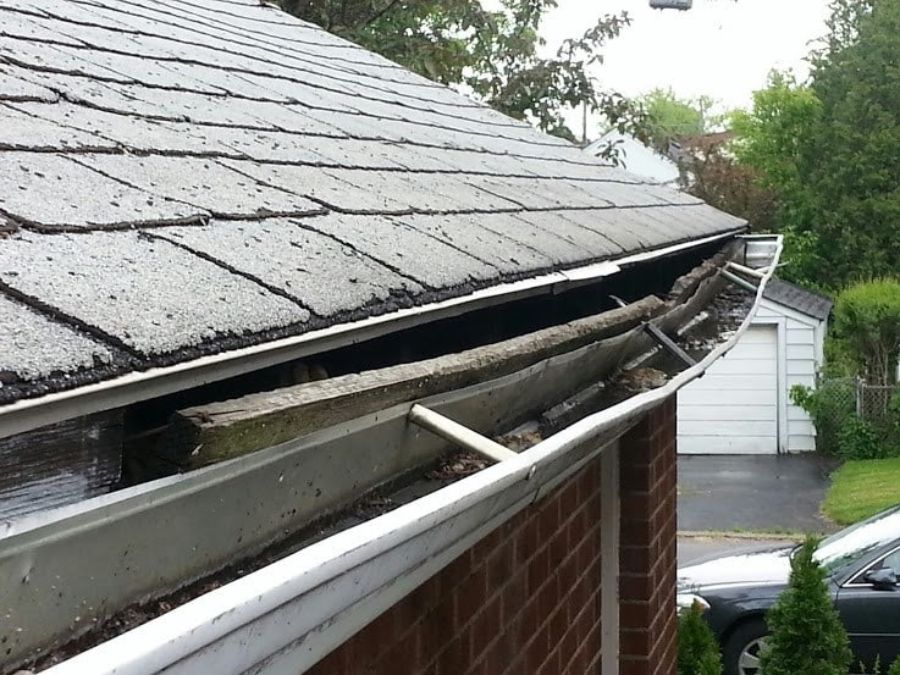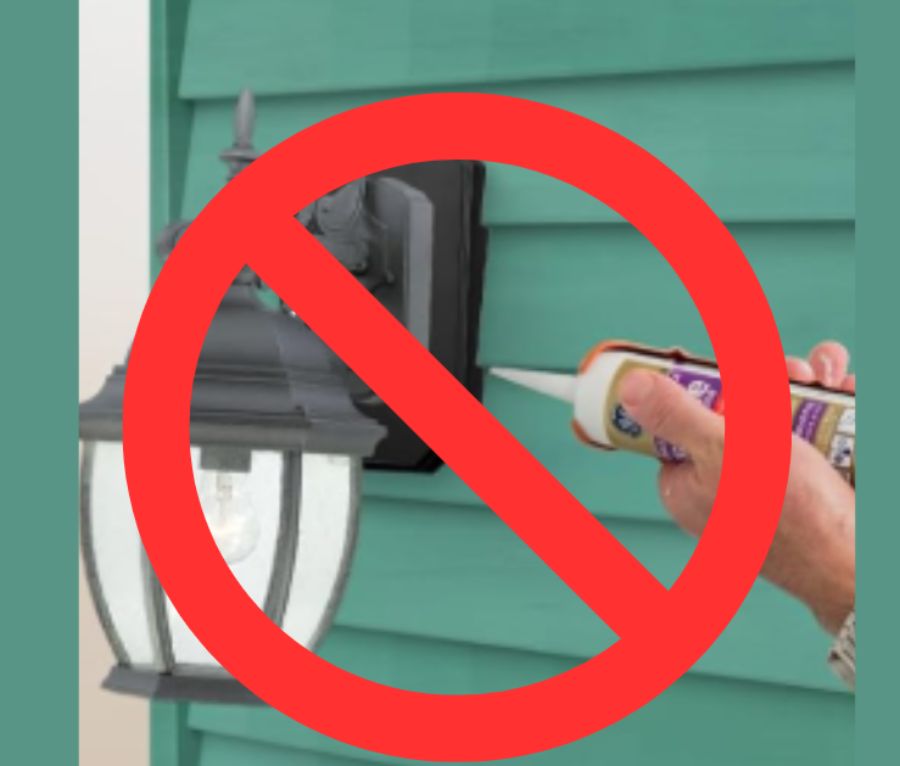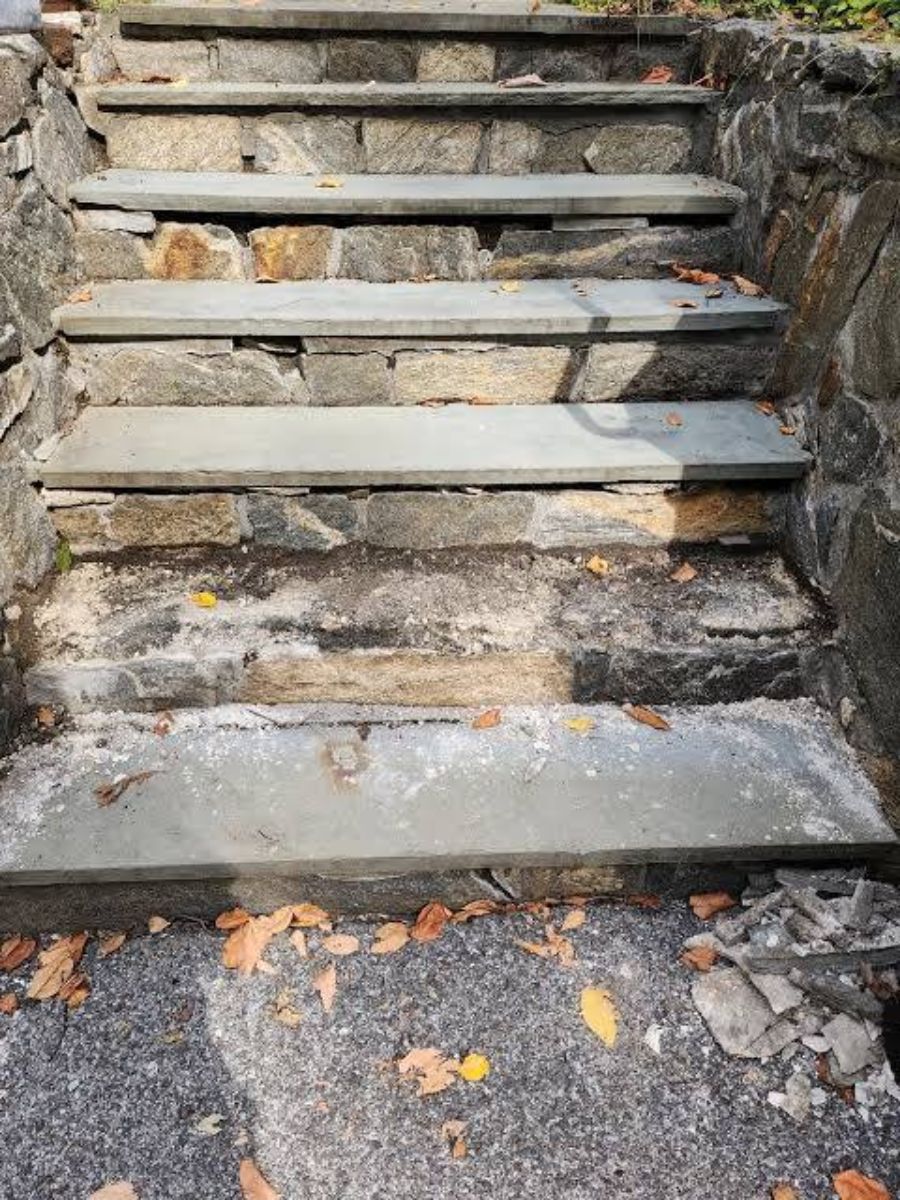Regardless of how you feel about the way they look cosmetically, gutters serve an enormous purpose from a functionality standpoint.
The key (which I’m sure seems logical) is water being able to make it into the gutter from the roof and being able to be guided through the gutter system, out the downspout, and directed wherever it may be being steered to flow to – i.e. the most ideal part of the yard or perhaps an underground drain.
If the water is not able to make it safely from the roof into the gutter, this whole process is negated and often what occurs is water starting to leak behind the gutter.
Essentially the water comes off the roof and ends up dripping/flowing (the degree of how much water can certainly vary) in between the backside of the gutter and the front side of the soffit/fascia that it is attached to and then falls directly on the ground below it.

This is problematic on a number of levels as the water that is coming off the roof and is being shed in a manner that it is not supposed to, can start to rot out the soffit and fascia in this area as the water consistently runs over them each time it rains.
The ground directly below the area where the water is coming from can also begin to show erosion and in severe cases, the water can even begin to work its way into the home, particularly during storms that are worse than others.
When this scenario is discovered, it is important that it is addressed.
This situation clearly reveals that the gutter system isn’t working properly.
This can happen for a few reasons, such as clogs, improper slope, or poor installation. Fixing it can be fairly simple if you know what to look for.
First, check for clogs. Leaves, dirt, or other debris can block the flow of water, causing it to overflow and leak. Use a ladder to safely inspect the gutter. Wear gloves and scoop out debris with your hands or a small trowel. Flush the gutter with a garden hose to make sure the water flows freely.

Next, check the slope of the gutter. Gutters should tilt slightly toward the downspouts so water can drain. If the slope is too flat, water may pool and spill over the back. Use a level to check the slope, and if it’s off, adjust the hangers or brackets that hold the gutter in place.
Another common problem is the presence of physical gaps between the gutter and the soffit/fascia area. These gaps allow the water to leak through. This is best corrected by having a professional bend a piece of aluminum flashing and installing it that will bridge the gap and allow the water safe passage from the roof into the gutter.

Sometimes the gutter itself is damaged or sagging, in these cases the gutter may need to be replaced or reinforced. Be sure to tighten any loose screws or brackets.
By addressing these problems, you can stop the leaking and protect your home from the subsequent water damage that can occur when this situation happens.
Regular gutter cleaning and maintenance will often help prevent these types of issues from taking place in the future.







